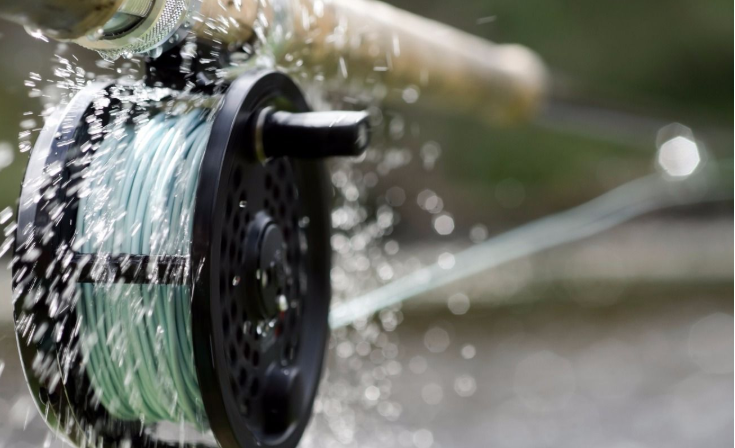What equipment to use to fly fish salmon

If you love a challenge, have you ever thought about learning how to fly fish? Not only is it both relaxing and rewarding, but fly fishing for salmon requires a lot of skill and dedication – one of the many reasons it’s a popular sport. There are a few essential items of equipment for fishing that a fly fisher will need when catching salmon, and below are just some of the essentials you’ll need to help you catch the king of the fish….
Rods
There are three main types of rods used when fishing for salmon, which all act as an extension of the forearm. Their weight is rated in numbers. The lightest is up to 6 (these are usually used by trout fishers) and the heaviest being anything from 8 and above. They are listed below:
i) A ‘standard’ nine-foot single handed fly rod
Popular in America and Canada, it’s important to find a rod that is strong enough to hold a big fish in fast-flowing rivers, beefy enough to cast heavy line tips and large flies, but also not so powerful that it’s only limited to a strong arm using it.
ii) A thirteen-to-fifteen-foot double-handed rod
These are very common in the UK and Europe and usually rated for a 10 and 11 weight. Two hands are needed to guide it, as they are extremely powerful.
iii) A switch rod
These are over ten feet in length and are usually very light. They’re not normally used by a beginner, but worth considering if fishing on a smaller river where long casting (more than twenty-five metres) is not necessary.
Reel
A salmon reel should have a ‘wide-arbour spool’, where the centre is in-filled so the backing line and fly line are not wound on it in tight turns. The reel should be adjustable and the spool should click as it turns. Fly Lines These have a smooth plastic coating over a braided-nylon core.
i) Double-tapered fly lines
Usually 30 metres long, with a taper at each end and a thick belly in between. Perfect for those who do not need to cast far.
ii) Weight forward fly lines
For the first ten metres, the head tapers towards its tip meaning the rest of its full thirty metres can fly out easily. This is the most common fly line used with single-handed fly rods today.
iii) Shooting heads
If you’re looking to cast as far as possible, then this is for you (although it’s worth noting it is specialist kit).
iv) Spey lines
Easy to use for overhead casting with a double-handed salmon fly rod.
v) Skagit lines
Used with Switch fly rods, either as single-headed rods for overhead casting, or double-handed for Spey casting.
Other Kit
Salmon fly fishing doesn’t require a lot of gear. A rod, reel and line are just the job, but there are other useful products available to help you catch a big’un. These include:
- A fly fisher’s waistcoat
- Fishing bags and clothing
- Waders and boots
- A wading staff
- Landing net
For more information about fly fishing and the skill and equipment needed, read: Fly Fishing for Salmon: A comprehensive guide for beginners and the more experienced (£9.99, Robinson) by Allan Sefton


